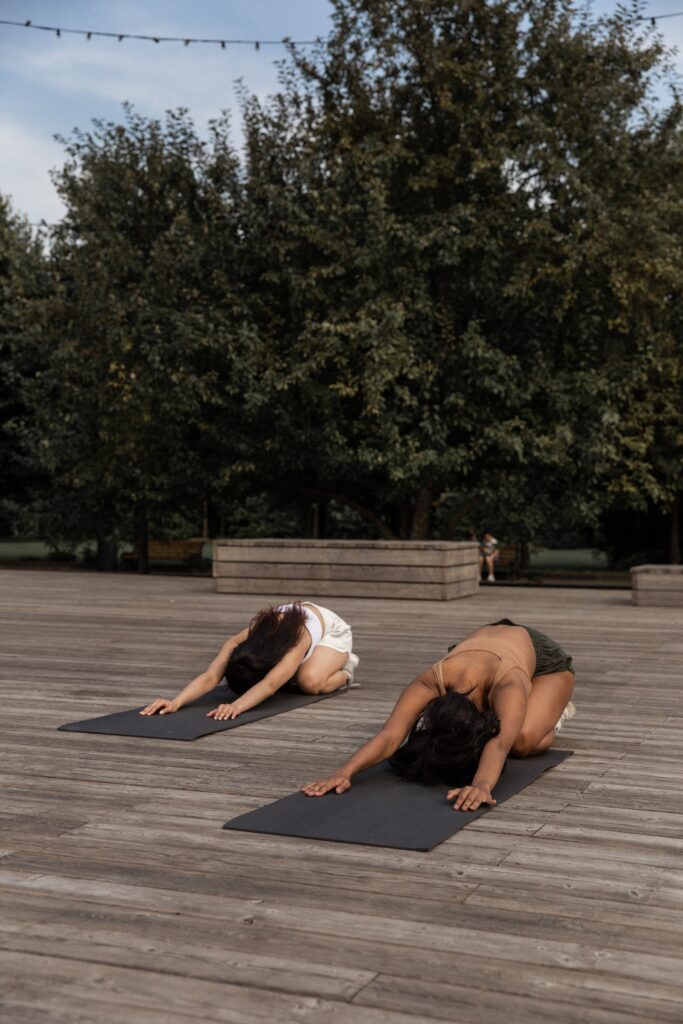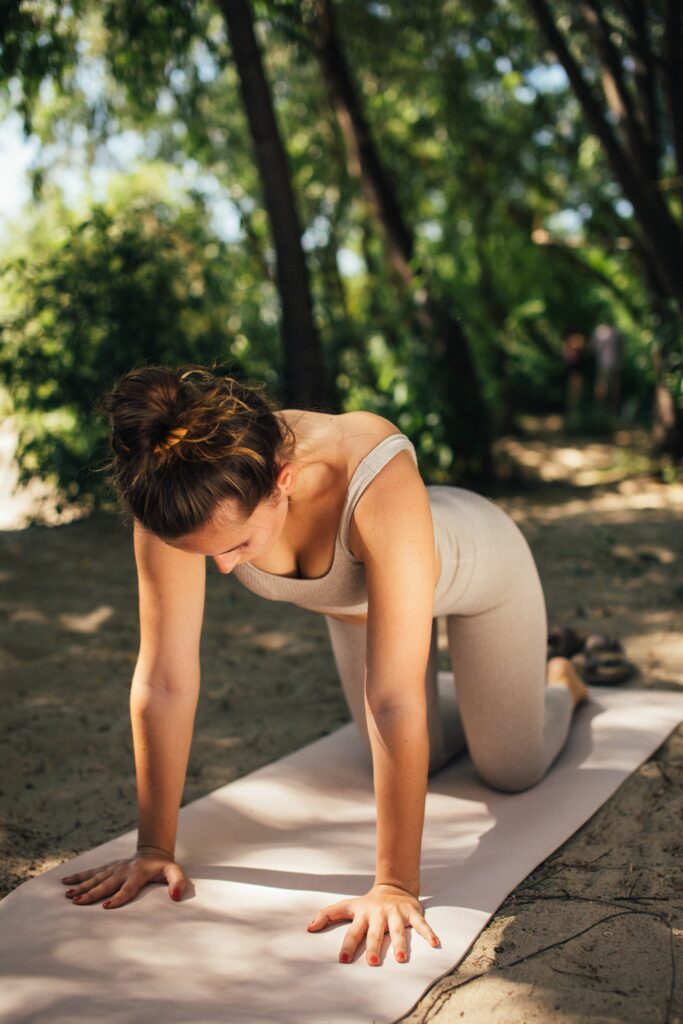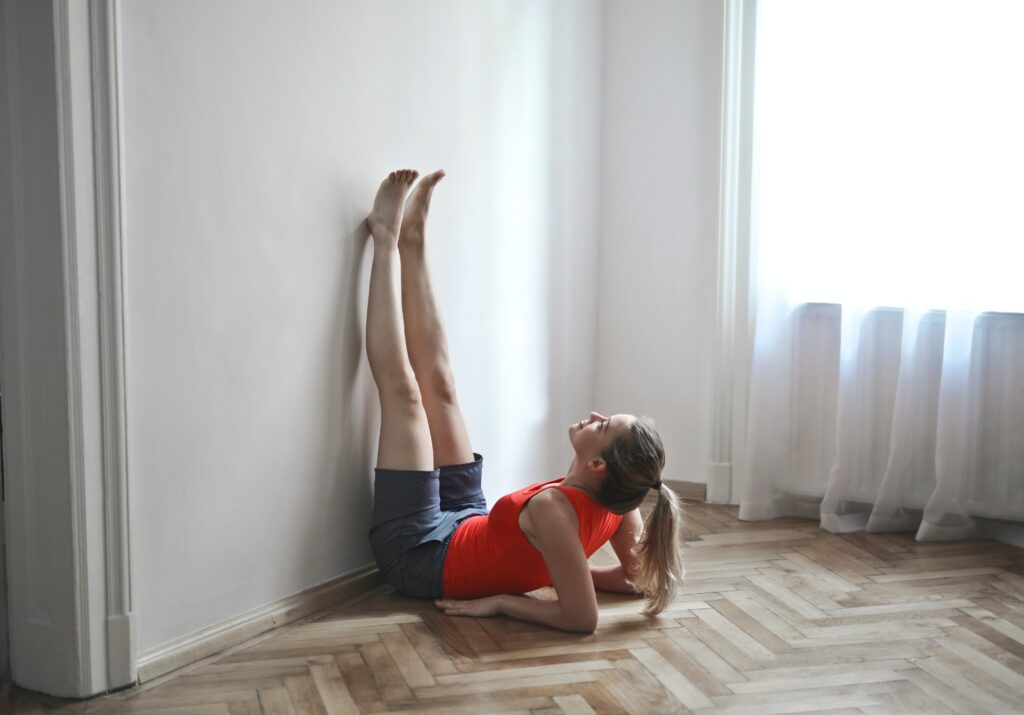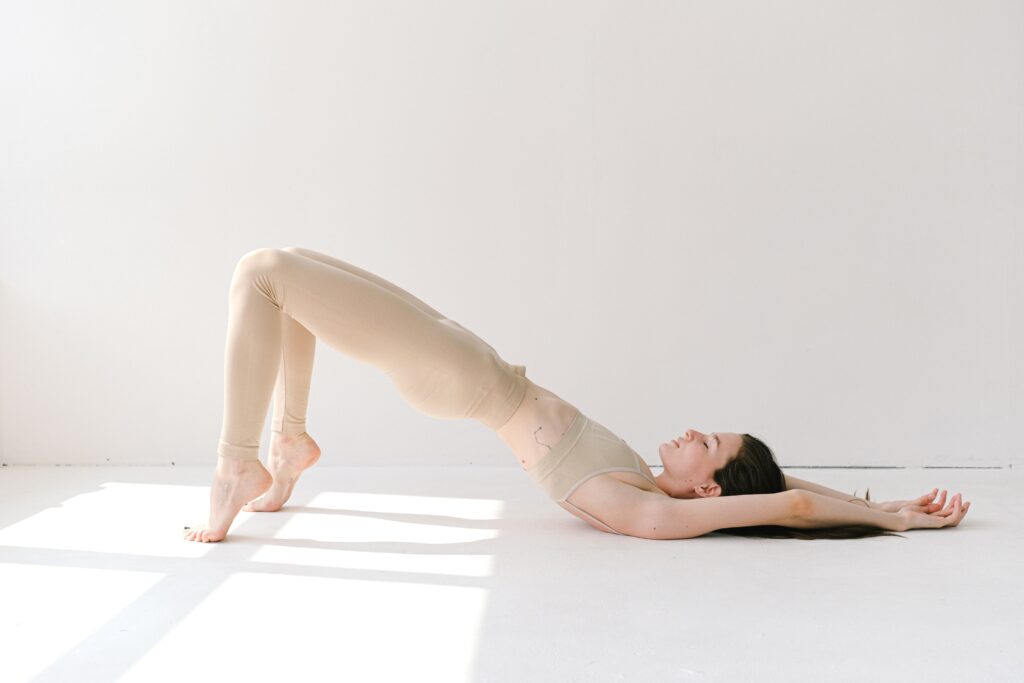In today’s fast-paced world, stress has become an inevitable part of our lives. Whether it’s the demands of work, family responsibilities, or the constant buzz of technology, stress can take a toll on our physical and mental well-being. Fortunately, there’s a centuries-old practice that can help you find calm and relief amidst the chaos – yoga. This article will familiarise you with the practice of Yoga, while providing some excellent Yoga poses to manage your stress.
Understanding Yoga and Its Role in Stress Relief
Yoga, originating from ancient India, is not just a physical exercise but a holistic practice that encompasses the mind, body, and spirit. It offers a multitude of benefits, one of the most prominent being stress relief. Through a combination of physical postures, breathing techniques, and meditation, yoga can help you manage stress and promote overall relaxation.
The Science Behind Yoga’s Stress-Relief Magic
Before we delve into specific yoga poses for stress relief, let’s understand how yoga works its magic on stress. Yoga achieves stress reduction through several mechanisms:
1. Deep Breathing:
Yoga emphasizes conscious and deep breathing. Deep breaths activate the body’s relaxation response, reducing the production of stress hormones like cortisol. This calming effect helps alleviate stress and anxiety.
2. Mind-Body Connection:
Yoga encourages the connection between the mind and body. By focusing on the present moment during yoga practice, you can temporarily escape the worries of the past and future, promoting mental calmness.
3. Physical Release:
Yoga poses release tension and stiffness in the muscles. As your body relaxes, so does your mind, making it an excellent tool for stress management.
4. Meditation and Mindfulness:
The meditation aspect of yoga allows you to cultivate mindfulness – the ability to stay fully present without judgment. This mindfulness can help you better manage stressors in your daily life.
5. Stimulates the Parasympathetic Nervous System:
Yoga activates the parasympathetic nervous system, also known as the “rest and digest” system. This counters the overactivity of the sympathetic nervous system, which is responsible for the “fight or flight” response to stress.
Now that we understand how yoga works to relieve stress, let’s explore a series of calming yoga poses that can be your go-to tools for finding tranquility in the midst of life’s challenges.
Calming Yoga Poses for Stress Relief
1. Child’s Pose (Balasana):

Child’s Pose is a gentle, restorative posture that helps release tension in the back, shoulders, and chest. It also encourages deep breathing, which calms the mind and alleviates stress.
How to perform Child’s Pose:
- Kneel on the floor with your big toes touching and knees hip-width apart.
- Sit back on your heels and extend your arms forward, lowering your chest toward the floor.
- Rest your forehead on the mat and breathe deeply for 1-2 minutes.
2. Cat-Cow Pose (Marjaryasana-Bitilasana):

Cat-Cow Pose is a gentle flow that helps release tension in the spine and improves flexibility. It also encourages coordination with your breath, enhancing relaxation.
How to perform Cat-Cow Pose:
- Start on your hands and knees in a tabletop position.
- Inhale as you arch your back, lifting your head and tailbone (Cow Pose).
- Exhale as you round your back, tucking your chin and tailbone (Cat Pose).
- Continue this flow for 1-2 minutes, syncing your movements with your breath.
3. Legs Up the Wall Pose (Viparita Karani):

This restorative inversion pose promotes relaxation by draining lymphatic fluid from the legs and calming the nervous system.
How to perform Legs Up the Wall Pose:
- Sit close to a wall with your legs extended.
- Lie on your back and swing your legs up the wall, forming an L shape with your body.
- Rest your arms by your sides and close your eyes. Hold for 5-10 minutes, focusing on your breath.
4. Corpse Pose (Savasana):

Savasana is the ultimate relaxation pose. It allows your body and mind to fully surrender, promoting a deep sense of calm and stress relief.
How to perform Corpse Pose:
- Lie on your back with your arms at your sides and palms facing up.
- Close your eyes and take slow, deep breaths.
- Let go of all tension in your body and stay in this pose for 10-15 minutes.
5. Bridge Pose (Setu Bandha Sarvangasana):

Bridge Pose is a gentle backbend that stretches the spine and chest, relieving stress and fatigue. It also strengthens the legs and buttocks.
How to perform Bridge Pose:
- Lie on your back with your knees bent and feet hip-width apart.
- Place your arms by your sides, palms down.
- Inhale as you lift your hips off the floor, creating a bridge shape with your body.
- Hold for 30 seconds to 1 minute, breathing deeply.
6. Balancing Butterfly Pose (Supta Baddha Konasana)
This pose combines the benefits of hip opening and relaxation, making it ideal for stress relief.
How to perform Balancing Butterfly Pose:
- Sit with the soles of your feet together and knees bent out to the sides.
- Lean back slightly, supporting your weight on your elbows.
- Extend your legs one at a time, keeping them together.
- Rest your arms by your sides and hold for 1-2 minutes, focusing on your breath.
Conclusion
Incorporating these calming yoga poses into your daily routine can be a powerful tool for stress relief. Yoga not only helps you unwind physically but also cultivates mental clarity and emotional balance. Remember that consistency is key, and the more you practice, the better you’ll become at managing stress through yoga.
So, whenever life feels overwhelming, roll out your yoga mat, take a deep breath, and embark on a journey of self-discovery and relaxation through the wonderful world of yoga. Your body and mind will thank you for it, as you unlock the secrets to lasting stress relief and inner peace.
Frequently Asked Questions (FAQs)
1. How often should I practice these yoga poses for stress relief?
Ideally, aim for a daily practice, even if it’s just a few minutes. Consistency is key to reaping the stress-reducing benefits of yoga. However, if daily practice isn’t feasible, try to incorporate these poses into your routine at least 2-3 times a week.
2. Can beginners do these poses?
Absolutely! These poses are beginner-friendly and can be modified to suit your flexibility and comfort levels. Start slowly, listen to your body, and don’t push yourself too hard. Over time, you’ll notice improvements in your flexibility and stress management.
3. When is the best time to do these poses for maximum stress relief?
The best time to practice these poses for stress relief depends on your schedule and personal preferences. Some people find that starting their day with yoga helps set a positive tone, while others prefer practicing in the evening to unwind. Experiment and find a time that works best for you.
4. How long should I hold each pose?
The duration can vary, but a general guideline is to hold each pose for at least 1-2 minutes. This allows your body and mind to fully relax and experience the stress-reducing benefits. However, feel free to adjust the duration based on your comfort level and the time you have available.
5. Can I use props like yoga blocks or cushions to assist in these poses?
Yes, props can be incredibly helpful, especially for beginners. Yoga blocks, cushions, or blankets can provide support and make the poses more comfortable. For example, you can place a cushion under your hips in Bridge Pose or use a yoga block to support your forehead in Child’s Pose.
6. Can yoga really help with stress relief?
Yes, yoga has been proven to be an effective tool for stress relief. It not only relaxes the body but also calms the mind and promotes mindfulness. Over time, a consistent yoga practice can help you better manage stress and improve your overall well-being.
7. Is it necessary to combine these poses with meditation for stress relief?
While meditation can enhance stress relief, it’s not always necessary to combine it with yoga poses. The poses themselves, when practiced mindfully with deep breathing, can provide significant stress reduction benefits. However, if you’re interested in meditation, it can be a valuable addition to your stress management toolkit.
8. Are there any specific precautions I should take before practicing these poses?
If you have any medical conditions or injuries, it’s advisable to consult with a healthcare professional or a certified yoga instructor before starting a yoga practice. They can provide guidance on modifications and ensure that the poses are safe for your specific situation.
9. Can children and seniors benefit from these poses?
Yes, people of all ages can benefit from these yoga poses for stress relief. However, it’s important to modify the poses to suit the individual’s abilities and physical condition. Children and seniors may need gentler variations of these poses, and it’s recommended that they practice under the guidance of an experienced yoga instructor.
10. How long does it take to experience the stress-relief benefits of yoga?
The timeline for experiencing the stress-relief benefits of yoga varies from person to person. Some individuals may notice immediate relaxation after a single session, while others may require a few weeks of consistent practice to observe significant changes in their stress levels. Patience and regular practice are key to reaping the rewards of yoga for stress relief



